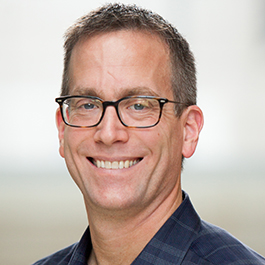Todd D. MurpheyDirector of Transformative ResearchDirector of the Master of Science in Robotics ProgramProfessor of Mechanical Engineering

Research Topics
Human-swarm interaction
Control of cyber-physical systems in uncertain environments
Human-machine interaction in biomedical devices
Control Synthesis and Embodied Intelligence
Physical Information and Active Learning
twitterProfessor Murphey's research focuses on computational methods in dynamics and control, with applications in neuroscience, health science, robotics, and automation. The group focuses on computational models of embedded control, biomechanical simulation, dynamic exploration, and hybrid control. The mathematical approaches used by the group lead to many orders of magnitude improvement in computational efficiency for reliable real-time implementation. Applications include assistive exoskeleton control, stabilization of energy networks, bio-inspired active sensing, entertainment robots, robotic exploration, and software-enabled stroke rehabilitation.
Interactive & Emergent Autonomy Lab
In the Interactive and Emergent Autonomy Lab, our research focuses on computational methods in data-driven control, information theory in physical systems, and embodied intelligence. We investigate how both autonomous systems and biological systems interact with their environments (and, in some cases, with each other) to learn and improve their behaviors. This work often involves mathematical modeling, development of new mathematical tools, algorithmic implementation and programming, and experimentation.
Example projects include robotic exploration using electrosense, robotic exploration using mechanical contact, human-in-the-loop control, and shared control for rehabilitation/assistive devices. We also work in the field of algorithmic matter, where we develop computational models to enable the design of microrobots with minimal actuation, sensing, and computation.
California Institute of Technology Pasadena, CA
Ph.D. in Control and Dynamical Systems, 2002
Thesis: Control of Multiple Model Systems
University of Arizona Tucson, AZ
B.S. in Mathematics, summa cum laude, 1997
September 18, 2019
''A Robot Made of Robots...'' published in Science Robotics
August 22, 2019
MURI Meeting on Algorithmic Matter and Emergent Behavior
June 22, 2019
May 20, 2019
IEA Lab received DARPA award in collaboration with Siemens
April 17, 2019
IEA Lab paper in Science Robotics on information theory for assistive devices
April 12, 2019
IEA Lab part of new MURI award
April 10, 2019
Todd Murphey appointed to Air Force Scientific Advisory Board
January 9, 2019
Ola's Masters Thesis Defense and PhD Prospectus
December 9, 2018
Ian, Taosha, and Ana present at WAFR
September 27, 2018
September 24, 2018
Science Robotics
Katie's paper Ergodicity reveals assistance and learning from physical human-robot interaction was published in Science Robotics in April 2019. In the paper, information theoretic principles were applied to the investigation of physical human-robot interaction.
NSF Science Nation
Engineering highly adaptable robots requires new tools for new rules. NSF-funded research aiming to make it easier for humans to work directly with a robotic partner in applications such as physical therapy.
Control Systems Society
Ahalya won third place in the 2017 IEEE Control Systems Society Video Clip Contest with her video Autonomous Robot Drawing: From Distribution to Actions using Feedback.
CBS Chicago
Professor Murphey was interviewed as part of a CBS story on robots improving productivity.
